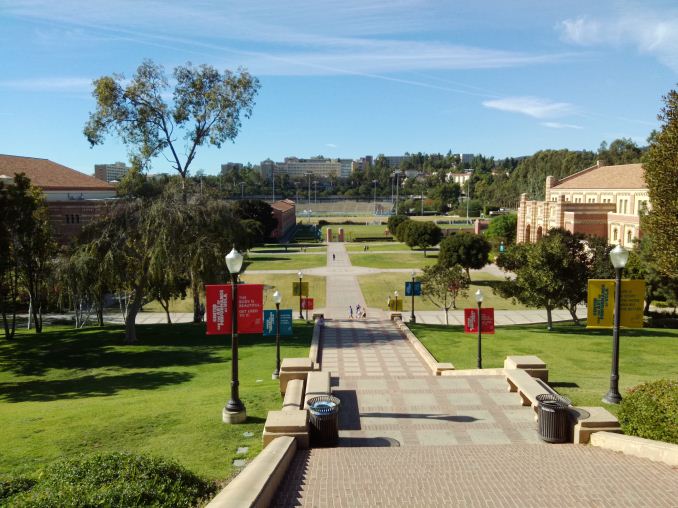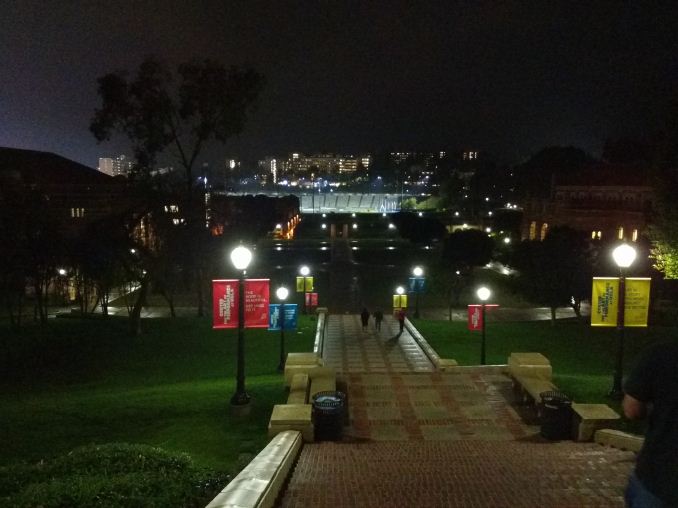The Google Nexus 9 Review
by Joshua Ho & Ryan Smith on February 4, 2015 8:00 AM EST- Posted in
- Tablets
- HTC
- Project Denver
- Android
- Mobile
- NVIDIA
- Nexus 9
- Lollipop
- Android 5.0
Camera
In the case of tablets, cameras have become increasingly important. While it’s still a bit awkware to take photos and video with a tablet, there is still value to having decent cameras on a tablet. For the front-facing camera, it’s pretty clear that there is a lot of value to be had here as the tablet can be a good tool for video conferencing in lieu of a bulky laptop. The rear camera can also have value, but mostly for taking a photo of a whiteboard or simply when opportunity dictates. To fulfill these duties, the Nexus 9 has been outfitted with a rather standard set of cameras. On the rear, we see an 8MP, 1/4 inch format sensor while the front-facing camera has a 1.6MP, 1/5 inch sensor. I’ve included a table of the full camera specs below in the interest of readability.
| Camera Specifications | |||
| Google Nexus 9 | |||
| Front Camera | 1.6MP | ||
| Front Camera - Sensor | OV9760 (1.75µm, 1/5") |
||
| Front Camera - Focal Length | 2.18mm | ||
| Front Camera - Max Aperture | F/2.18 | ||
| Rear Camera - Sensor | IMX219 (1.12 µm, 1/4") |
||
| Rear Camera - Focal Length | 3.097mm (33mm eff) | ||
| Rear Camera - Max Aperture | F/2.4 | ||
This is pretty much par for the course when it comes to tablets. The optics aren’t particularly remarkable in one way or another, as I haven’t noticed any obvious design issues in any of my test photos, and the focal length isn’t excessively long or short. The UI that comes with Google Camera in general is unremarkable as well. This isn’t a slight against it, but the fact that I don’t have anything significant to complain about is a good step forward from the past when the design of the camera UI was a significant friction point in the user experience.
The one issue that I’ve noticed is that the camera’s auto focus and capture speed are significantly worse than what I saw on the iPad Air 2. Unfortunately, it isn’t really possible to have standardized testing here as a tablet can’t be mounted to a tripod for testing. As there isn’t a custom ISP in the Nexus 9, it’s likely that the Tegra ISP isn’t up to scratch here as I noticed that AF speed is similar to what I saw on the SHIELD Tablet despite differing camera modules.
For the most part, there’s not much else to be said about the camera systems on the Nexus 9 as they aren’t quite as heavily focused as one would see in the smartphone space. All that’s left to do is test the cameras themselves.
In this basic test of daytime photo quality, we can see that HTC has done a reasonably good job of processing the image as noise is generally suppressed without an enormous loss of detail. However, there really isn't a lot of detail to speak of in this sensor. There's also a decent amount of dynamic range as there's detail in the shadows but there's no HDR mode to compensate in cases where there is insufficient dynamic range. HTC continues to cap the base ISO to 100, which seems to be a strange move in this situation as the shutter speed is more than high enough to drive the sensor gain even lower.
In this low light scenario, the Nexus 9 effectively falls flat on its face. With an ISO of 3200 and a shutter speed of 1/12s, there's effectively no detail past the first set of steps. Luminance noise is strong and present throughout the image, and color noise also has a tendency to creep in as well. Given the sheer size of the tablet, it's also hard to stably hold the tablet to take a photo despite the relatively fast 1/12s shutter speed. One should really avoid using this to take photos in low light unless there's no other choice.
In video, detail generally tends to be about the same as what one can find in photos, which means that daytime footage should have decent quality but low light rapidly reduces the quality as the sensor gain must increase. In the case of the Nexus 9, we see that video tops out at 1080p30 maximum with no slow motion available, and that the file is in a .3gp format instead of a standard mp4 that most are familiar with. The video itself is encoded with H.264 baseline at 14 Mbps, which is likely to be below the maximum that the encoder can support. There doesn't appear to be any significant level of stabilization in this case, which is a bit disappointing although not entirely surprising. There is also a lot of focus hunting throughout the video, which is quite distracting.
Overall, it seems that the camera on the Nexus 9 is an acceptable one for a tablet, although this would effectively be unacceptable on a high-end smartphone. The camera itself produces decent output in daytime but really suffers in low light due to the small pixel size, relatively narrow aperture, and small sensor. There are also a lot of issues with consistent and reliable auto focus, as it often takes multiple focus runs to get the camera to focus properly on even high contrast objects. Each focus run takes a significant amount of time as well, which hurts the shooting experience when combined with the somewhat long capture latency. I would avoid using this camera unless it is strictly necessary, although it isn't terrible as a camera for cases such as document scanning.
























169 Comments
View All Comments
lucam - Thursday, February 5, 2015 - link
Next time you will write the article for Anand.tuxRoller - Thursday, February 5, 2015 - link
Just tested on my N7 2013. Results were far higher than shown in the chart.SR:64.2->76.1
SW:18.4->30.1
RR:11.2->13.4
RW:0.7->3.1
mpokwsths - Thursday, February 5, 2015 - link
Well, your results are far far more improved than 10% Andrei says.3 devices by 2 different users, all showed vast improvements (10-500%).
Only they refuse to acknowledge it.
Who knows, it seems Anandtech guys are on Apple's payroll...
eiriklf - Thursday, February 5, 2015 - link
Just wanted to note that on the NAND performance front, I believe the android devices which beat the nexus 9 in sequential speed use emmc 5.0 while the nexus uses a high quality emmc 4.5. I think this is because the tegra K1 SoC does not support emmc 5.0.tviceman - Wednesday, February 4, 2015 - link
Better late than never, although being this late is indeed a big letdown.Onto the hardware, looks like Denver is an interesting first custom SoC from Nvidia. Solid in some respects, lacking in others. I think it's a solid building block from which to work on and improve. I hope Nvidia continues the custom ARM core path and gets more design wins (if warranted) moving forward.
kepstin - Wednesday, February 4, 2015 - link
The Denver chip design is pretty interesting, but it reminds me very strongly of another mobile-targeted chip that didn't do well in the marketplace; the Transmeta Crusoe.Both are VLIW designs with in-order execution, both rely on software code translation that runs on the CPU itself. Both even used a partitioned section of system ram as a translated ops cache.
The most significant difference that I see between them is the addition of a native ARM decoder to the Denver CPU; the Crusoe didn't have a native X86 decoder and relied on the dynamic translation for all code that it executed.
I had a Crusoe for a while in a Sony Vaio; it was used in some of the very small/lightweight ultraportable laptops by Japanese manufacturers for a while.
phoenix_rizzen - Wednesday, February 4, 2015 - link
Didn't a large group of Transmeta devs get hired by Nvidia?ABR - Thursday, February 5, 2015 - link
Crusoe lost because Transmeta woke the sleeping giant Intel to the value of low-power, and then a group of 100 people couldn't keep up the resulting engineering race. The x86 world would be a pretty different place today if that hadn't occurred. But I'd say the jury is still out on the overall capability of the VLIW + morphing approach.frenchy_2001 - Thursday, February 5, 2015 - link
I would second that. A quick search returned a licensing agreement where nvidia licensed Transmeta's technology.This could be a good part of Denver.
About in order execution, the biggest experiment was from intel: itanium.
kgh00007 - Wednesday, February 4, 2015 - link
It's 3 months late, the nexus 9 was released on the 3rd of November!!No excuses, but it's just too late to help people make an informed decision!! Just like dog years, one year for a tablet is like 7 technology(dog) years!!